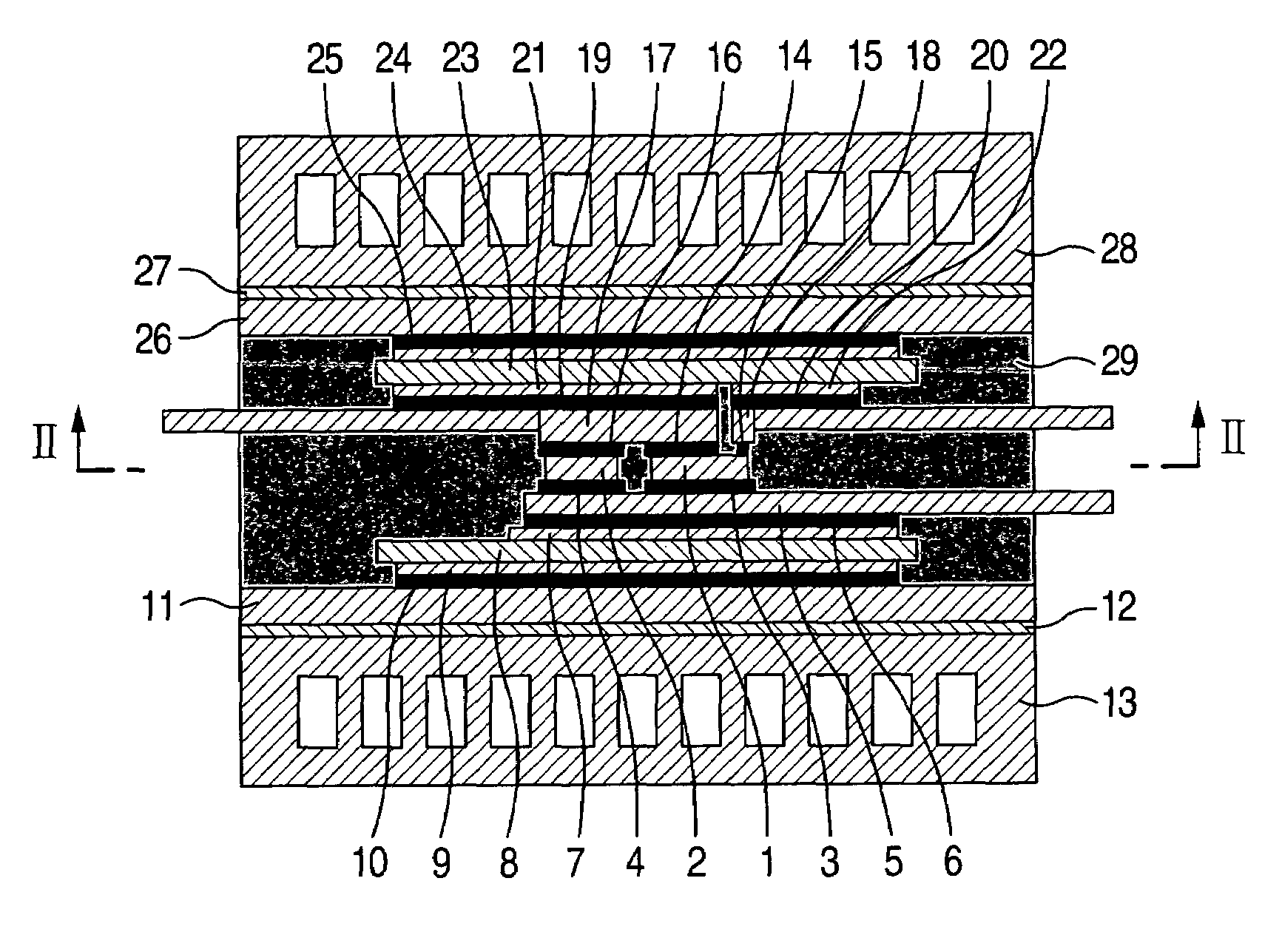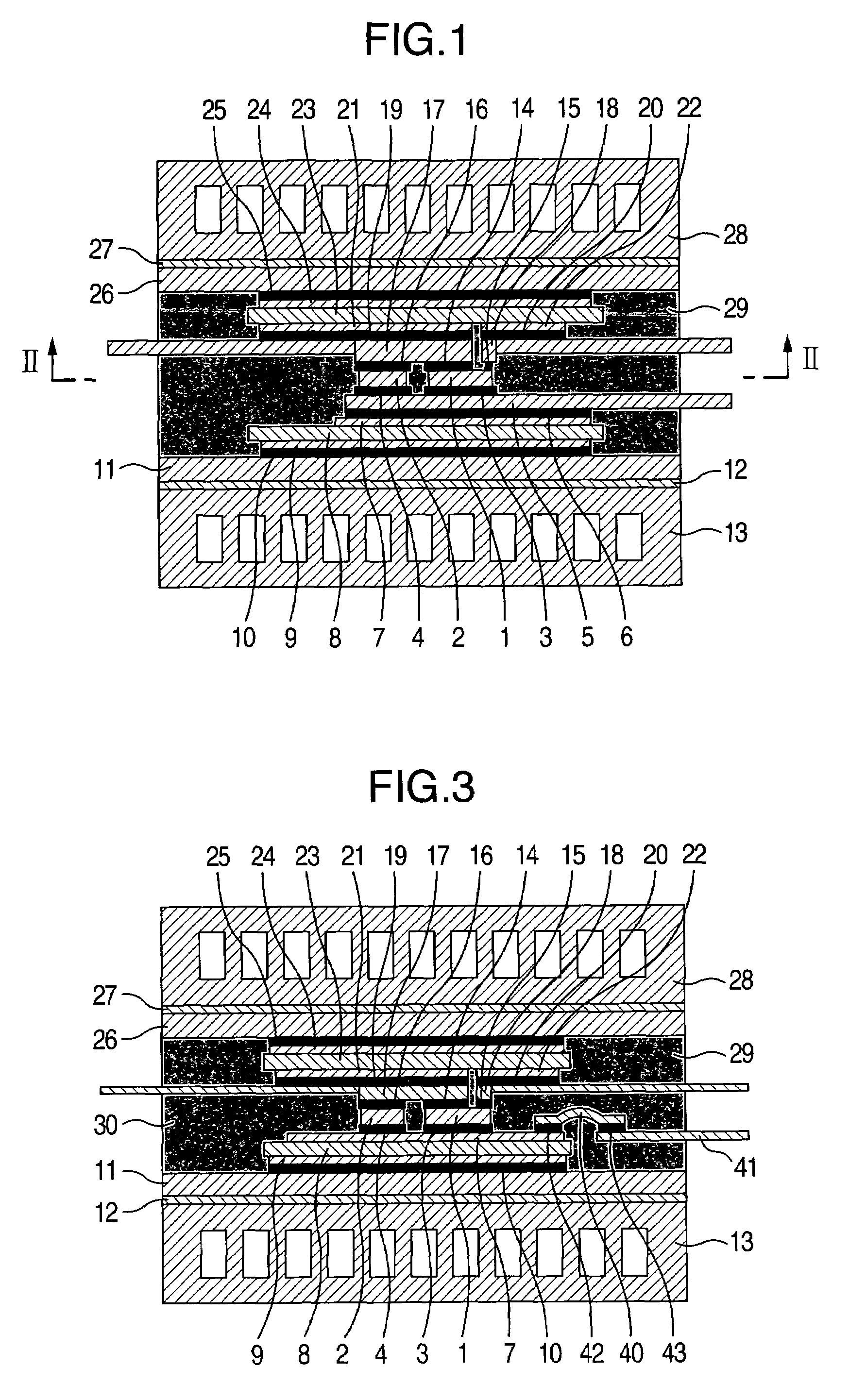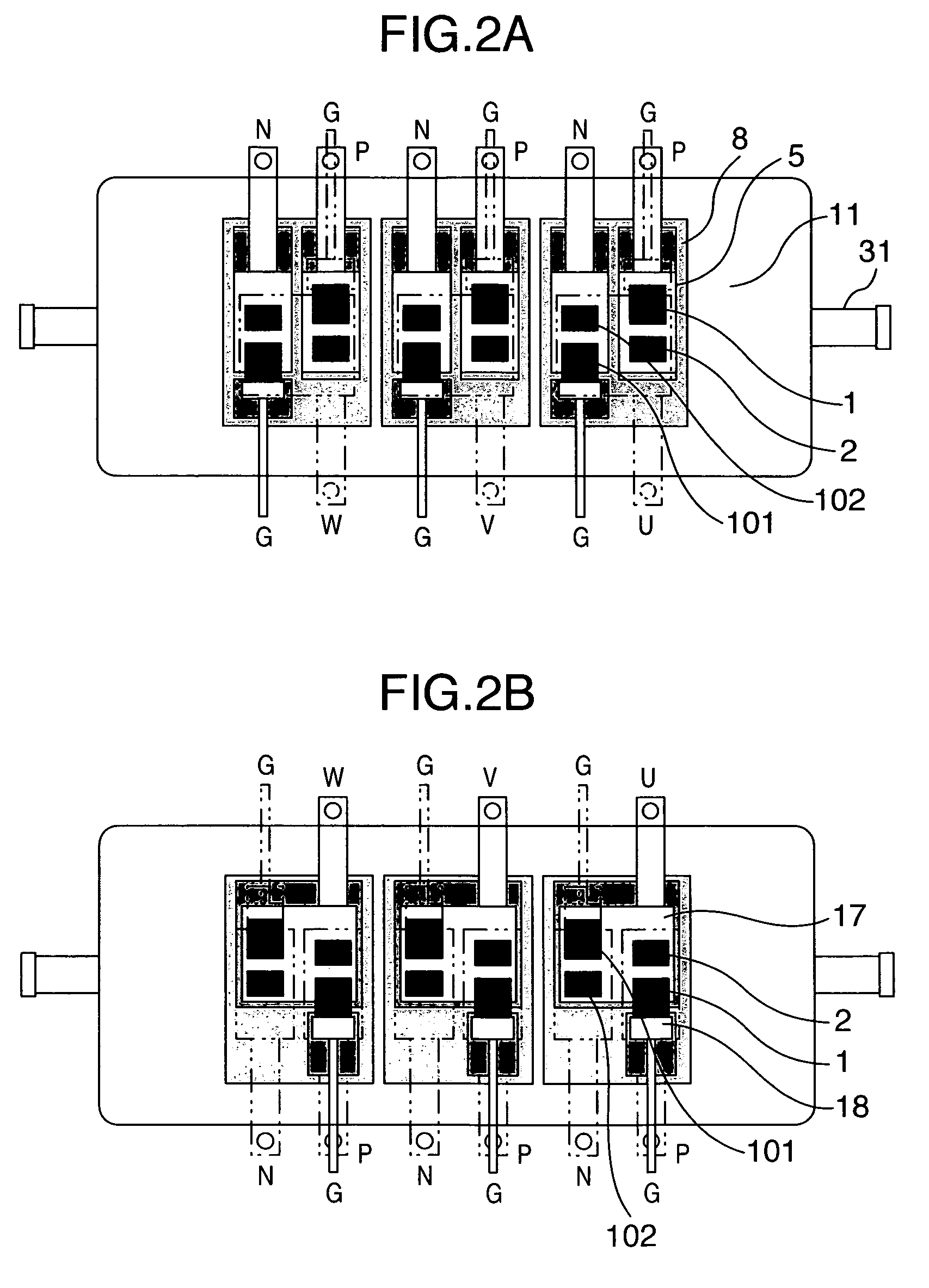Power semiconductor module
a technology of semiconductor modules and semiconductor elements, applied in semiconductor devices, semiconductor/solid-state device details, electrical apparatus, etc., can solve the problems of increasing the stress applied to elements or solders with a reduced reliability, and achieve the effect of minimizing the entire power semiconductor module, high reliability against thermal fatigue, and minimizing the power semiconductor elemen
- Summary
- Abstract
- Description
- Claims
- Application Information
AI Technical Summary
Benefits of technology
Problems solved by technology
Method used
Image
Examples
embodiment 1
[0017]An embodiment of the present invention will be explained by referring to the drawings. FIG. 1 shows a vertical cross-sectional view of a power semiconductor module in accordance with the embodiment, and FIG. 2 shows a horizontal cross-sectional view thereof. Reference numeral 1 in FIG. 1 denotes a power semiconductor element such as an IGBT or a power MOS FET, and numeral 2 denotes a power semiconductor element such as a free-wheeling diode. The lower sides of the power semiconductor element 1 and the power semiconductor element 2 are bonded to a lower-side lead electrode 5 with first solders 3 and 4 disposed therebetween. The material of the lower-side lead electrode 5 may be made of copper. However, when the electrode material is made of a composite material (Cu—C) of copper and carbon having a small coefficient of linear expansion, a stress in the first solders 3 and 4 or in a second solder 6 caused by thermal deformation can be relaxed, thus increasing a reliability. The l...
embodiment 2
[0027]FIG. 3 shows a cross-sectional view of a power semiconductor module in accordance with this embodiment. In the present embodiment, the lower sides of the power semiconductor elements 1 and 2 are bonded to the copper foil 7 of the insulating substrate. The power semiconductor elements 1 and 2 are bonded to the copper foil 7 with the first solders 3 and 4 disposed therebetween. A plate-like connection member 40 made of copper is connected to the copper foil 7 with a solder 42 disposed therebetween, and the connection member 40 in turn is connected to an electrode terminal 41 with a solder 43 disposed therebetween. Other arrangement is similar to that in the embodiment 1 and thus explanation thereof is omitted.
[0028]As the fourth solders 14 and 15 for bonding the power semiconductor elements 1, 2 and the upper-side lead electrodes 17, 18; a high temperature solder, e.g., having copper particles and tin particles mixed therein is used. Even for the first solders 3, 4 for bonding t...
embodiment 3
[0030]FIG. 4 shows a vertical cross-sectional view of a power semiconductor module in accordance with this embodiment, and FIGS. 5A and 5B show horizontal cross-sectional views thereof. More specifically, FIG. 5A is a cross-sectional view when taken along a line V-V in FIG. 4 and viewed from its lower side, and FIG. 5B is a cross-sectional view when taken along the line V-V and viewed from its upper side. In the present embodiment, the lower sides of the power semiconductor elements 1 and 2 are bonded to the copper foil 7 of the lower-side insulating substrate. The power semiconductor elements 1 and 2 are bonded to the copper foil 7 with the first solders 3 and 4 disposed therebetween. Meanwhile, the upper sides of the power semiconductor elements 1 and 2 are bonded to the copper foils 21 and 22 bonded to the upper-side insulating substrate 23. The power semiconductor elements 1 and 2 and the copper foils 21 and 22 are bonded together with the fourth solders 14, 15, and 16. The plat...
PUM
 Login to View More
Login to View More Abstract
Description
Claims
Application Information
 Login to View More
Login to View More - R&D
- Intellectual Property
- Life Sciences
- Materials
- Tech Scout
- Unparalleled Data Quality
- Higher Quality Content
- 60% Fewer Hallucinations
Browse by: Latest US Patents, China's latest patents, Technical Efficacy Thesaurus, Application Domain, Technology Topic, Popular Technical Reports.
© 2025 PatSnap. All rights reserved.Legal|Privacy policy|Modern Slavery Act Transparency Statement|Sitemap|About US| Contact US: help@patsnap.com



